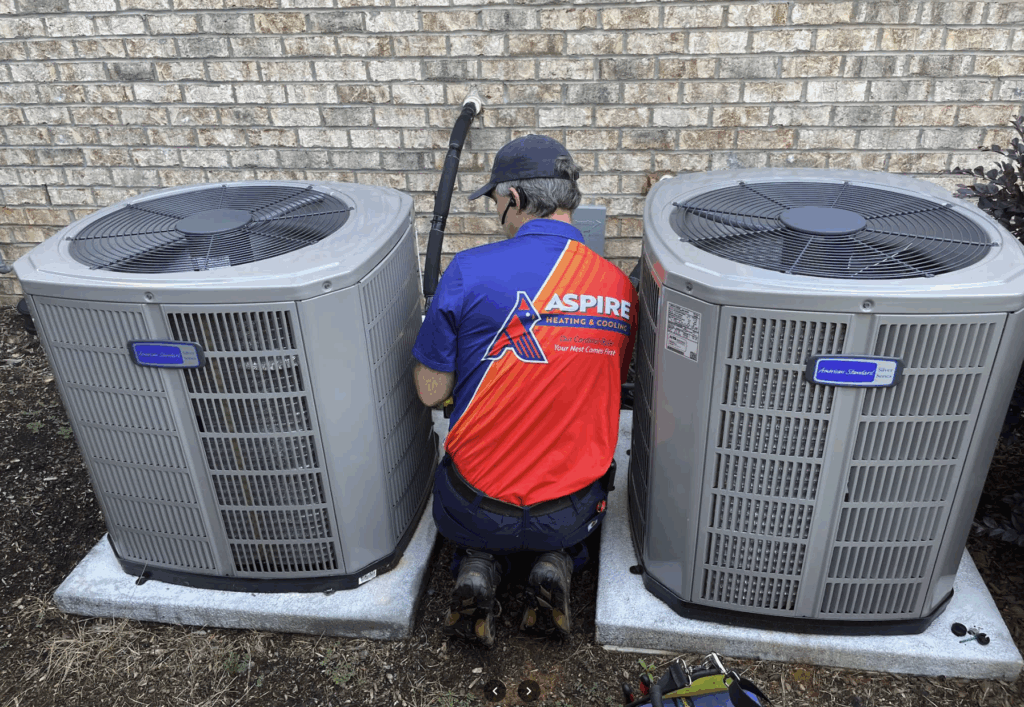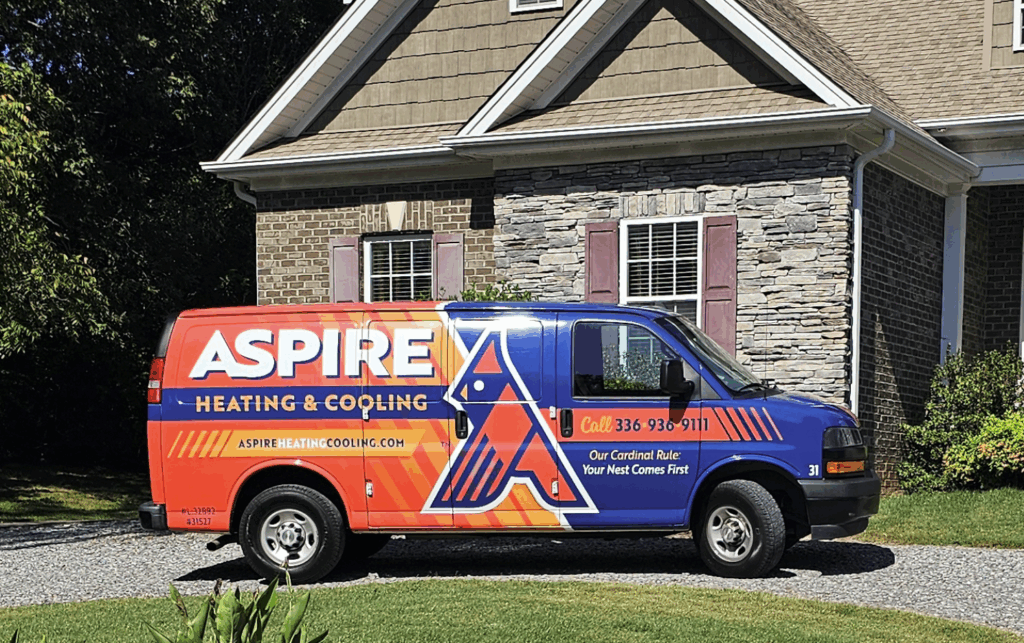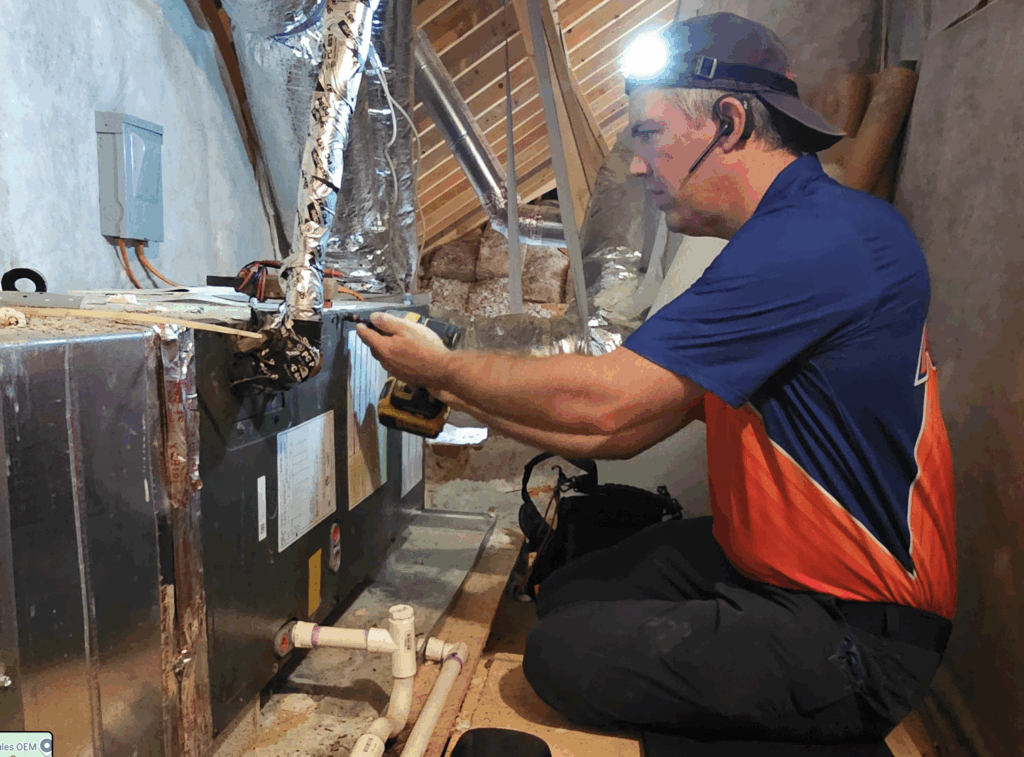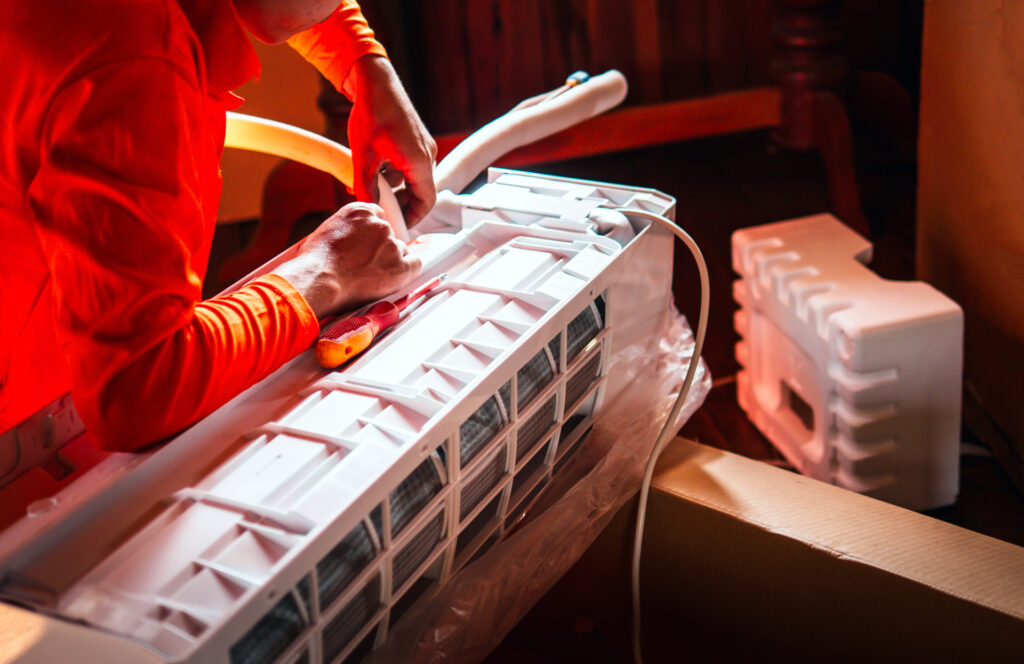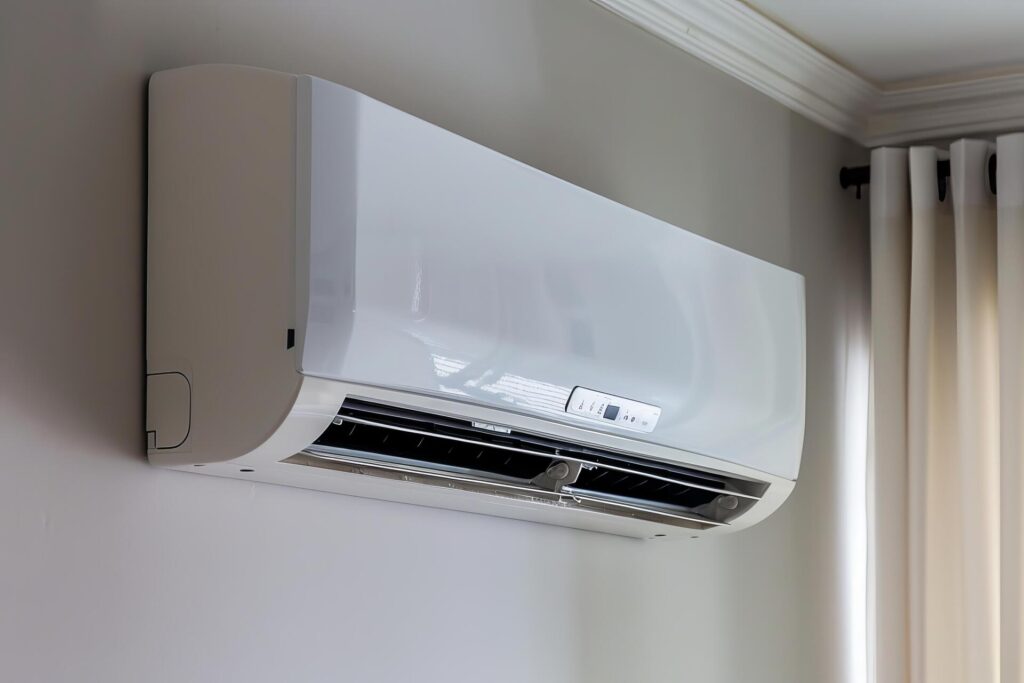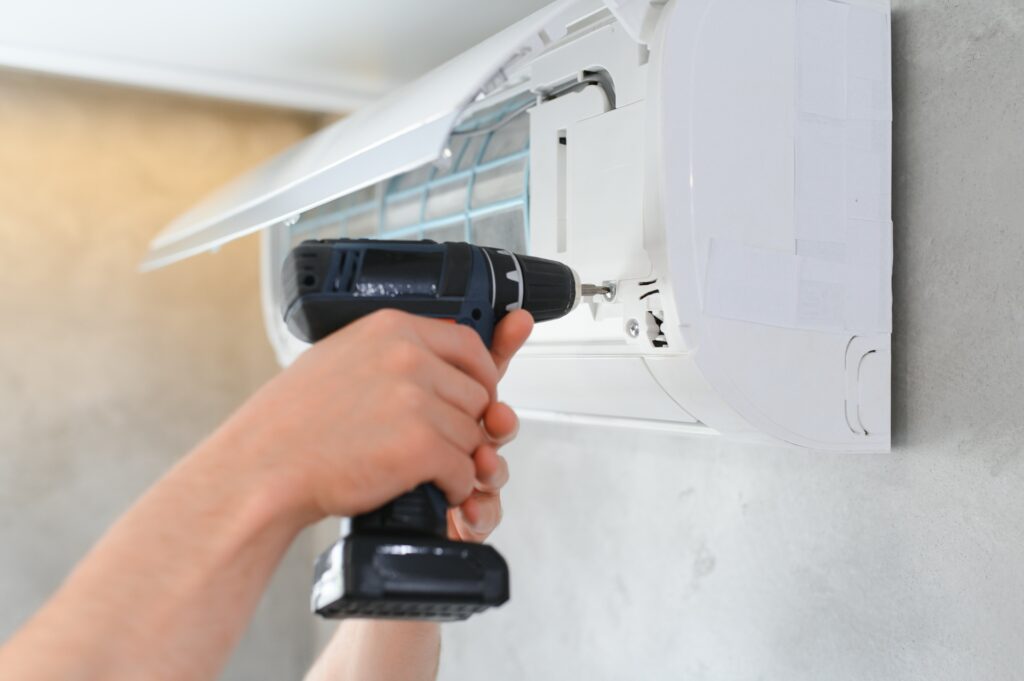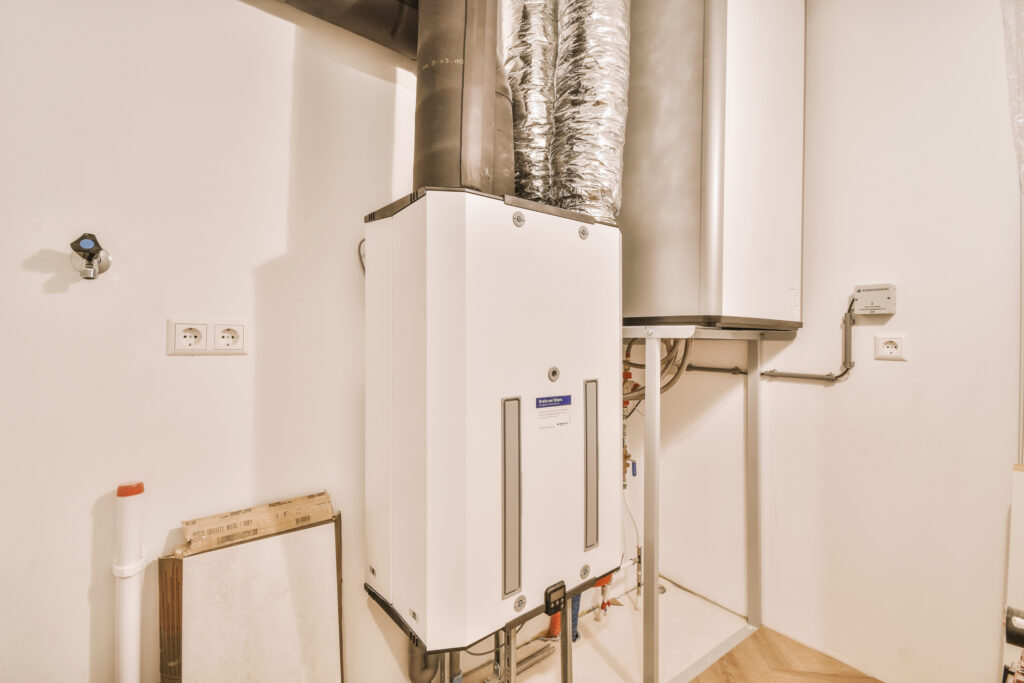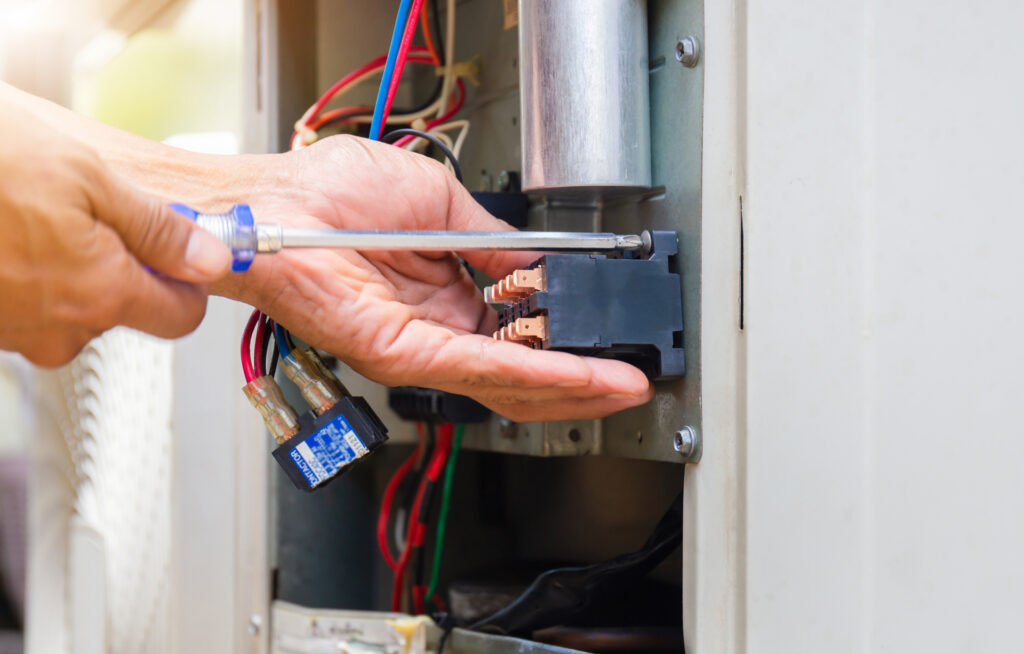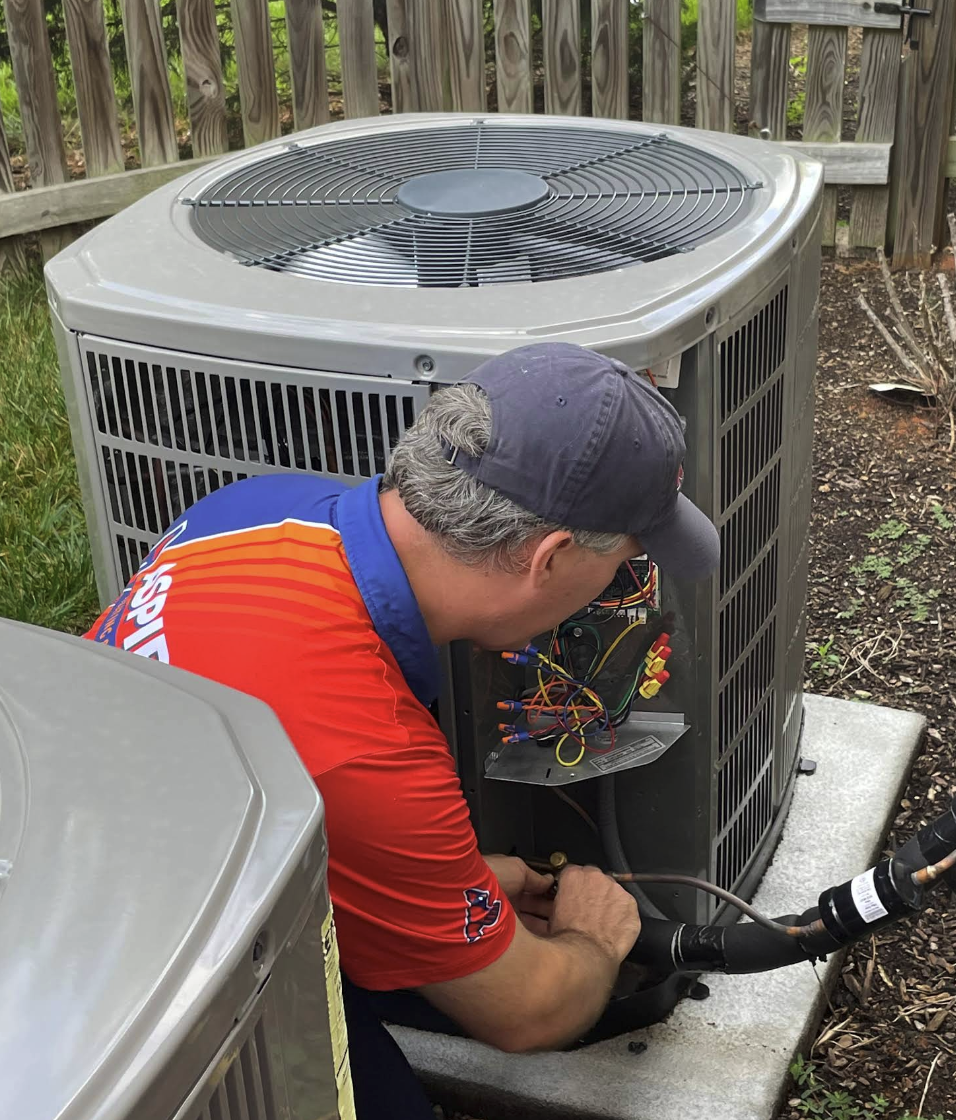There are very few of us who don’t enjoy the coolness of air conditioning on a hot summer’s day. Moreover, if you live anywhere in the South, air conditioning is not a luxury, it’s a necessity. And while most of us don’t know exactly how A/C works, most of us know what Freon is. For years, Freon, in the form of R22, was the refrigerant in your air conditioning units. But as of January 1, 2020, the production and importation of R22 Freon are illegal in the United States.
Should you be panicking if you have any type of air conditioning? Of course not. The HVAC industry along with the recycling industry has been preparing for this day. And whether you have a new or old HVAC system, Aspire Heating & Cooling is here to help. We have personalized solutions for ductless, gas furnaces, and heat pumps. With our NATE-certified technicians, we provide you with the quality products you deserve. Serving Winston-Salem, Clemmons, Bermuda Run, and Advance, our reliable service brings you peace of mind. If you’re not sure how this law affects you, give us a call at 336-281-0047. One of our team members will be happy to answer your questions about your system and Freon.
A Brief History of Freon
Notably, refrigeration works by changing the refrigerant from a liquid to a gas and back again. As it changes, it absorbs and releases heat effectively cooling the space. Back in the early 20th century, refrigeration was dangerous. The main cooling agents used were ammonia, methyl chloride, and sulfur dioxide. Unfortunately, all these compounds are toxic and highly combustible. Homeowners demanded safer refrigeration and in 1928 Thomas Midgley, Jr. and Charles Franklin Kettering invented Freon, a chlorofluorocarbon. Non-toxic and non-flammable, it was the ingredient needed to provide safe refrigeration and later air conditioning. DuPont began manufacturing Freon under different classifications, R12 in cars, R22 in residences.
Regrettably, it wasn’t until decades later that scientists discovered that chlorofluorocarbons destroy the ozone. The Earth’s ozone layer resides in the upper levels of our atmosphere. Basically, ozone consists of 3 atoms of oxygen bonded together. In a cycle that’s repeated over and over again, ozone uses UV light to break its bonds. Once free, oxygen re-bonds to become ozone again. Thus, it’s this repeated reaction that absorbs UV light and prevents it from reaching the surface of the earth. UV exposure is responsible for skin cancer, cataracts, and premature aging.
Unfortunately, one of the elements in Freon is chlorine. When Freon reaches our upper atmosphere, it too absorbs the UV light from the sun to break its bonds. This reaction frees the chlorine allowing it to interact with oxygen. The released chlorine breaks the bond of the ozone without using the energy of the UV light. However, the chorine remains free, allowing it to destroy ozone over and over again. Furthermore, this happens at a rate faster than the re-creation of ozone. Thus, with the destruction of this protective layer, UV light now travels down to the surface of the Earth.
What is R-410A and Why Is It Better?
When scientists discovered how Freon was affecting the ozone layer, they urged governments into action. 197 countries signed The Montreal Protocol agreeing to phase out the production and consumption of ozone-depleting substances like Freon. And so, the EPA instituted guidelines to phase out the production and import of R22 by 2020.
This gave the industry time to come up with a suitable refrigerant substitute. In 1991, Allied Signal, a conglomerate of chemical, automotive, aerospace industries, invented R-410A or Puron. Different than Freon, R-410A doesn’t contain chlorine and therefore doesn’t react with ozone. Starting in 2010, manufacturers used Puron as the refrigerant in cooling equipment.
Not only is R-410A better for the ozone layer, but it also provides improved overall operation of your cooling system. First, Puron allows your compressor to run cooler by absorbing and releasing heat better. This effectively reduces the risk of compressor burnout. Additionally, it’s non-flammable, non-corrosive, and the least toxic of all refrigerants.
Do You Know Heat Pumps Use Refrigerant?
Often, when consumers think of a refrigerant, like Freon, they think only of air conditioning units. However, heat pumps also use refrigerant. An important characteristic of refrigerants is that it shifts easily between a gas and liquid form. This also makes it very effective at heat exchange.
As a heat pump compresses and moves the refrigerant through the system, it collects and releases heat. In the summer, it removes heat from inside and releases it outside. But in the winter, a heat pump changes direction removing heat from outside, releasing it inside.
If you have an older heat pump manufactured before 2010, it’s likely to contain ozone-depleting Freon. Newer systems will contain the refrigerant Puron. However, if you’re not sure about your system, give us a call at 336-281-0047 and we’ll be happy to help. We’ll help you determine the refrigerant in your system and your best course of action.
What Should I Do if I Have an Older System?
Accordingly, you may be concerned if you have an older HVAC system. However, before you think about replacing your system, there are several considerations. First, the EPA allows you to continue using Freon if you have an older system. Secondly, the reclaim and recycling industry ensures that homeowners would have a supply of R22 by acting early. Currently, there are adequate supplies to service existing equipment.
Certainly, there are benefits to replacing your old system. While you may continue using R22 in your system, as supplies dwindle, the cost of Freon may rise. Moreover, new systems are more efficient, reducing the cost of energy and consumption. Plus, your older system may not have much life left in it anyway, as units generally last about 15 years.
Which Leads Us to the Importance of Service Plans
Many of us think we can skip annually tuning up our HVAC system. Because our system is running smoothly, we lull ourselves into believing changing our air filter is enough. While regularly changing your air filter is important, equally so is routine service.
First, if you have an older system that still uses R22 Freon, you’ll want to catch leaks early on. With regularly scheduled tune-ups, technicians can spot and repair areas where leaks are likely to develop. In addition, detecting leaks early on will help to preserve as much of the refrigerant as possible.
Furthermore, there are parts of your system that are difficult to clean. Admittedly, dust is something you can never eradicate. And dust buildup on the internal parts of your HVAC causes your system to work harder. Even just a little dust can result in reduced efficiency while increasing the cost of energy. For example, dust on either your evaporator or condenser coils will affect your indoor comfort. Chiefly, dust acts as an insulator, keeping the heat trapped inside the system. Without the complete transferring of heat, your system will try to compensate, possibly overheating. Moreover, although most HVACs last 15-20 years, you can expect your system to last half as long without maintenance.
At Aspire Heating & Cooling, we’ve got 2 service plans to protect your investment. With our basic service plan, we’ll inspect your condenser coil, check Freon levels in addition to other basic services. While our premium plan checks some additional components as well as the basics. Plus, you receive priority scheduling and 15% any necessary repairs. And we service any make or model of HVAC system, whether you purchased it from us or not.
So, You’ve Got NATE-Certified Technicians, What’s the Big Deal?
The North American Technician Excellence (NATE) is the nation’s largest non-profit certification institute for heating, ventilation and air conditioners. Certification requires passing a nationally-recognized test developed by a committee of industry experts. NATE certification tests are rigorous tests representing real working knowledge of HVAC systems.
When you choose a NATE-certified technician, you’re hiring someone with the knowledge and experience to service your system. Homeowners can rest assured that with a NATE-certified technician, they are getting the best installation and service. You’ll enjoy fast, efficient service with fewer callbacks.
At Aspire Heating & Cooling, we think it’s important to have the best-trained technicians. That’s why we employ fully-licensed and NATE-certified technicians trained to meet our strict standards. NATE-certified, experienced technicians mean that we fix your unit with no detail overlooked. Veteran-owned and operated, we’re also a Trane Factory Authorized Dealer.
What Makes Trane Different?
For over 100 years, Trane has been building home comfort systems with dedication to quality, innovation, and reliability. Trane builds products that are efficient to operate, work when they’re supposed to, and last for a long time. It’s this kind of reliability and trust that has earned them the 2019 America’s Most Trusted brand award from Lifestory. And for Trane, this is the fifth consecutive year for winning this award.
With over 1500 patents, Trane is always seeking to build new and innovative products. Additionally, Trane thoroughly tests units to provide you with dependable, reliable units. Testing involves 16 weeks of bone-chilling cold and blistering heat, in repeating two-week sessions. Moreover, some units have been encased in ice while others endure more than 2,600 hours of continuous testing. Trane works hard to earn a 93% customer satisfaction rate. Furthermore, with eyes on the future, all Trane units manufactured since 2010 use R-410A as the refrigerant.
Becoming an authorized dealer involves adhering to Trane’s strict guidelines. Dealers need to stay current with the latest technology as your trusted guide to selling HVAC systems. Each sale involves knowledge of system sizes, efficiency ratings, and climate of the residence. Trane dealers work with you to find an HVAC system providing quality indoor comfort and lower energy costs. That’s why Aspire Heating & Cooling worked hard to become an authorized dealer.
R22 Freon May Be a Thing of the Past, But Aspire Heating & Cooling is Here to Stay
With increased discoveries, manufacturers must align technology to provide safe, reliable yet environmentally-friendly products. In the early 1900s the invention of R22 Freon brought safe, efficient cooling. Yet, with advanced discoveries, scientists found Freon depleted the ozone layer. Undaunted, scientists developed a new refrigerant, Puron, as a safer, reliable alternative.
Likewise, the best technicians continue to evolve. They learn new techniques for installing and maintaining HVAC systems. Fortunately, the technicians at Aspire Heating & Cooling are no exception. Using the latest technology, our technicians can tackle all HVAC issues. From tune-ups to repairs to replacing your system, we’ve got you covered. Our NATE-certified technicians perform troubleshooting, catching minor concerns before they develop into major malfunctions. This saves you time, money, and aggravation. Moreover, our maintenance plans comply with Energy Star recommendations and the American National Standards Institute.
At Aspire Heating & Cooling we make things easy for you by providing upfront service, honest pricing, and reliable solutions. Give us a call today at 336-281-0047. Our team is dedicated to providing you with the quality service you deserve.


